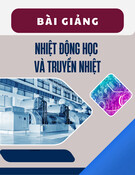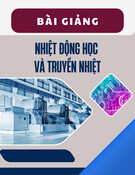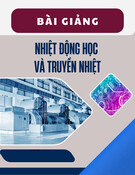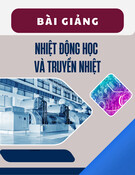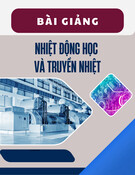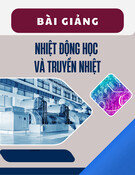
ISSN: 2615-9740
JOURNAL OF TECHNICAL EDUCATION SCIENCE
Ho Chi Minh City University of Technology and Education
Website: https://jte.edu.vn
Email: jte@hcmute.edu.vn
JTE, Volume 19, Issue 06, 2024
34
The Application of BMS in Electrical Energy Management and Carbon Emission
Reduction
Thi Mong Nhi Bui1* , Tung Giang Tran3, Hoang Trung Nguyen2, Minh Tri Bui3, Tieu Long
Nguyen3, Hoang Minh Nguyen1, Thi Ngoc Thuan Le1, Dang Linh Bui1, Thi Thu Lanh Le1,
Minh Tuan Tran1
1Thu Duc College of Technology and Economics, Vietnam
2VNU High School for the gifted, Vietnam
3Ho Chi Minh City University of Technology and Education, Vietnam
*Corresponding author. Email: nhibtm@ctd.edu.vn
ARTICLE INFO
ABSTRACT
Received:
05/07/2024
This article presents the application of Building Management System
(BMS) in electrical load management. The BMS system in this article
structure includes DDC, IOT 2050 Siemens, sensors, inverters and loads.
Implementing this system in buildings saves energy, reduces operating
costs and reduces CO2 emissions. A comparative analysis was conducted
between projects with and without BMS implementation. The investment
in the BMS incurs an additional capital expenditure, with a payback period
of 7.3 years and a system lifespan of 20 years, providing a return of more
than 13% on the investment. The results show significant energy savings
with total consumption reduced by 13%. These findings highlight the
effectiveness of BMS in optimizing energy use across different areas of a
building, providing significant financial and environmental benefits. This
research contributes to understanding the economic and environmental
implications of integrating BMS into infrastructure development, creating
favorable conditions for stakeholders in the construction and energy
sectors.
Revised:
19/08/2024
Accepted:
04/09/2024
Published:
28/12/2024
KEYWORDS
Building Management System;
Energy management;
Carbon Emission Reduction;
CO2 emissions;
Optimizing energy usage.
Doi: https://doi.org/10.54644/jte.2024.1617
Copyright © JTE. This is an open access article distributed under the terms and conditions of the Creative Commons Attribution-NonCommercial 4.0
International License which permits unrestricted use, distribution, and reproduction in any medium for non-commercial purpose, provided the original work is
properly cited.
1. Introduction
Previously, when there was no building management system (BMS), buildings due to undeveloped
technology, so the scale was not large, often managed by many simple automation systems. By the end
of the 19th century a strong turning point in the electronics industry, computers drove the formation of
BMS. Honeywell, an American building automation solutions company [1] unveiled the Energy system
as one of the first BMS systems in the 1960s, followed by a new era in building management, from
simple BMS automation systems to flourishing and demonstrating strengths when combining Many
functions in a single system, optimizing efficiency, as well as operating costs for the building, reduce
the load of a large amount of electricity consumption that electricity for the building accounts for up to
40% of global energy use [2], [3], [4].
With the development of science and technology, BMS is increasingly researched, applied, and
improved, not only stopping at management but also going further with the application of the Internet
of Things (IoT) [5], [6], [7], integrating the internet to synchronize data processing in the cloud. More
recently, with the development of AI, the Common Energy project [8] uses AI to perform monitoring
and solve system problems. In addition, Roja Eini [9] integrates control models based on environmental
parameters, control, and learning to give reasonable control commands when necessary—in [10]
offering a dual-application control model of temperature humidity, and CO2 concentration data,
increasing the accuracy of control. However, the initial investment cost for optimal BMS is quite large,
which raises questions about whether BMS applications are profitable because investors need profits. In
general, in buildings, especially large or very large buildings, the amount of energy consumed mainly
comes from air conditioning and cooling (HVAC) systems, before this situation, in the study [11], [12]

ISSN: 2615-9740
JOURNAL OF TECHNICAL EDUCATION SCIENCE
Ho Chi Minh City University of Technology and Education
Website: https://jte.edu.vn
Email: jte@hcmute.edu.vn
JTE, Volume 19, Issue 06, 2024
35
they used a predictive control algorithm based on a simple synthetic mathematical model describing the
construction of thermal dynamics and being mined Generated using real-world heat and electricity data,
This method offers significant benefits at peak-hour demands. Several studies [13] use ESS energy
storage systems for efficient energy management. Reduce the energy consumption of the HVAC system
by reducing uptime by changing the indoor temperature limit at the expected peak time, simulated using
an algorithm using MatLab [14]. Building Information Modeling is also applied in BMS system
construction to provide a more visual view of the BMS system, studies of [15], [16], [17] have built the
system based on the preliminary Design of Building Information Modeling (BIM), which facilitates the
future design and construction as well as reasonable investment costs and system scale helps to minimize
errors and save significant time.
Most studies delve into system optimization and control without specifically analyzing the
advantages of building BMS deployment or not. Thereby, this study clarifies the issues of fuel
consumption, and comparative analysis between projects with and without BMS implementation.
Another contribution of the research paper is on the environmental aspect when operating optimally,
reducing emissions, and saving energy.
2. Methodology
2.1. Introduction to the configuration of the Building Management System
Figure 1 shows a building management system (BMS) consisting of components of Management
Level management levels, including the IOT 2050 suite connected to a PC and Router responsible for
storing data for the system from sensor feedback data to control data released and executed in the system
from Direct Digital Control (DDC) at the Automation Level and send data to the Cloud, Field level
including MFM meter, CO2 sensor, Contactor, IG5A Inverter and fan system. This design was designed
to clarify the difference between the two fan systems, a conventional fan system controlled by contactors
when receiving signals from DDC and a somewhat more complex controlled fan system when the speed
is controlled by VSD-IG5A strata converters that receive signals from DDC but take into account CO2
content. In the system conventional fans most of the time the fan will operate at maximum power.
However, in fan systems with VSD and CO2 sensors due to consideration of CO2 content, the fan power
will be changed to suit the return value from the sensor according to the se equation mentioned at the
back. This method allows the fan to operate more economically as the power will be continuously
regulated through the controller.

ISSN: 2615-9740
JOURNAL OF TECHNICAL EDUCATION SCIENCE
Ho Chi Minh City University of Technology and Education
Website: https://jte.edu.vn
Email: jte@hcmute.edu.vn
JTE, Volume 19, Issue 06, 2024
36
Figure 1. Configuration of the BMS system in monitoring and controlling motor speed according to
CO2 concentration
2.2. Diagram of the principle of system connection
In more detail about this model, Figure 2 shows the diagrams of principles and connections specific
to each device: SIMATIC IoT2050 is an industrial communication gateway (Industrial Gateway) used
to connect OT (Operational Technology) and IT (Information Technology) automation systems as well
as cloud computing services (Cloud) for Digital transformation of production. ECO-C46 Direct Digital
Control Modbus RTU 485 | BACnet MSTP, supports BACnet MSTP communication interface, Modbus
RTU 485 from BMS system, easy to install, highly aesthetic, 7-segment LED screen displays intuitive
parameters, controlled by 2 buttons, Integrated real-time clock (RTC) allows configuring control to run
or stop the system according to a preset schedule. QTG-054P 1.5hp ventilation exhaust fan with 7000m3
airflow. The Modbus RS485 communication standard is integrated in the MFM 383 multifunction meter
and IG5A Inverter. After that, MFM 383 and IG5A Inverter are controlled by ECO-C46 via RS485
communication standard. The ECO-C46 is connected via IoT 2050 via the Modbus RS 485 standard.
From IoT 2050 linked to Personal computers and routers through TCP / IP communication standards.
Figure 2. BMS system wiring diagram in monitoring and controlling engine speed according to CO
concentration
2.3. The principle of controlling the ventilation fan according to CO2 concentration
CO2 concentration is measured in parts per million (ppm). Concentrations of 250-350 ppm are often
found outdoors. CO2 concentrations in the range of 350-1,000 ppm are considered typical in occupied
spaces with decent ventilation. When CO2 levels are more than 1,000 ppm, this can lead to feelings of
drowsiness, stuffiness, and mild confusion. At concentrations between 2,000 and 5,000 ppm, there may
be an increase in symptoms associated with increased CO2 exposure, including.
• Decreased concentration
• Increased heart rate
• Mild nausea

ISSN: 2615-9740
JOURNAL OF TECHNICAL EDUCATION SCIENCE
Ho Chi Minh City University of Technology and Education
Website: https://jte.edu.vn
Email: jte@hcmute.edu.vn
JTE, Volume 19, Issue 06, 2024
37
CO2 concentrations above 5,000 ppm are dangerous and can lead to toxicity and hypoxia.
Providing an alert at 1,100 ppm is important but may not prevent CO2 from rising beyond that.
Because indoor CO2 levels can be harmful to human health, it's important to set an alert threshold below
this level — which can be 900 or 1,000 ppm.
To be able to know the current CO2 concentration in an area, the CO2 level management system
collects all the data from the CO2 sensor. Sensors located in the same zone will be analyzed. Based on
the choice of control type, the system will take the minimum/maximum value or average value from the
sensors.
After obtaining the CO2 concentration value from that area, the controller compares it with the preset
values of the system to issue commands to control the rotating fans through the inverter.
Therefore, when the CO2 concentration is above 900 ppm, the system will start the fan to start
running at a low speed. When the CO2 concentration is above 2000 ppm, the system will control the fan
to run at maximum speed.
The following equation will be used to control fan speed according to CO2 concentration:
𝑦 = 0.7𝑥
(1)
Figure 3. Linear diagram between velocity and CO2 concentration
In this paper, PNTech's IG5A inverter, 1.5kW motor, and DDC will be used to control and monitor
CO2 speed and concentration. First, the inverter will be configured hardware as follows:
• Drv (Drive Mode): 3 – Modbus RS485 communication
• Frq (Frequency Mode): 7 – Modbus RS485 communication protocol
• LED display: I59 – 0: Install Modbus RS485 protocol
• LED display: I60 – 3: Inverter address setting
• LED display: I61 – 3: Set the Baud speed of the inverter
• LED display: I62 – 0: Continuous operation mode when the transmission signal is lost
• LED display: H30: Power of motor (1.5kW)
• LED display: H31: Install number of poles (4)
• LED display: H32: Slip factor setting
• LED display: H33: Setting the rated current of the motor
• LED display: H34: No-load current setting (50% of rated current)
• LED display: H36: Efficiency of motor
• LED display: H39: Carrier frequency setting

ISSN: 2615-9740
JOURNAL OF TECHNICAL EDUCATION SCIENCE
Ho Chi Minh City University of Technology and Education
Website: https://jte.edu.vn
Email: jte@hcmute.edu.vn
JTE, Volume 19, Issue 06, 2024
38
• LED display: F22: Maximum frequency of the inverter
Next, configure the software as follows:
Figure 4. Setting parameters for the inverter
3. Test and results
The case study described in this paper is Design of a ventilation system for a university laboratory
with dimensions of Length 9m, Width 5m and Height 3.5m. This laboratory operates 24/24 and has a
variable number of students entering and exiting during the day. The design requirement is to maintain
the CO2 concentration below 900ppm according to the standard. The volume of the laboratory is
calculated according to the equation below:
V= Length x Width x Height = 9x5x3.5=157.5m3
According to TCVN 5687:2010, this laboratory requires a multiple of 10-12 air exchanges. In this
study, the average value of 11 times is chosen. The total air flow required to be supplied in 1 hour to
maintain the CO2 concentration according to the standard is:
Q=V.n = 157.5x11=1732.5 m3/h
Based on this calculation result, the centrifugal fan is selected with the parameters as in Table 1.
Table 1. Parameters of ventilation fans for laboratories
Name
Parameter
Power
1.1kw
Pressure
870-515Pa
Flow
1000-2000m3/h
Speed
2800 rpm
Blower size
D224x196mm
Suction size
D224 mm
3.1. Surveying motors running on CO2 sensors
This experiment monitors the energy consumption of the motor (1.1kw) when there is a change of
the CO2 sensor (24-hour uninterrupted data acquisition time).
In the period from 0h to 24h, the amount of CO2 has different changes at different times, so the engine
speed changes.

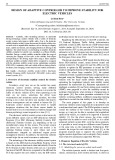

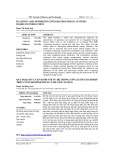
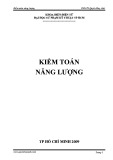
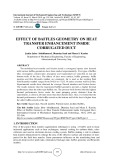
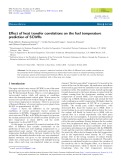
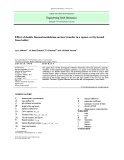
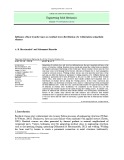
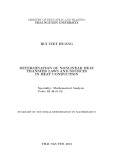







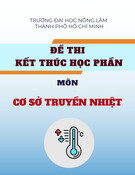

![Ngân hàng trắc nghiệm Kỹ thuật lạnh ứng dụng: Đề cương [chuẩn nhất]](https://cdn.tailieu.vn/images/document/thumbnail/2025/20251007/kimphuong1001/135x160/25391759827353.jpg)
